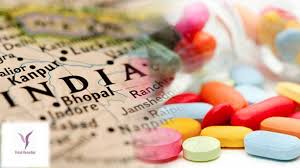In its Pharma Vision 2020, the Indian government’s Department of Pharmaceuticals put forth its aim to make India a leader in end-to-end drug production. India’s pharmaceutical exports reached the US$10.80 mark as of November 2019. That figure is being projected to touch US$2 billion by 2020.
MSME Roles in Pharma
MSMEs play an essential role in the pharma sector. There are over 24,000 registered MSME units within the Indian pharma sector, which form an integral part of the pharma supply chain. SMEs contribute 35-40% of the Indian pharmaceutical industry’s production in value terms and have a turnover of around ?35,000 crore. Most big pharma entities depend heavily on MSME units for manufacturing and niche marketing.
Contract Research and Manufacturing (CRAMs) and Biopharma are also important areas in which MSMEs can make a mark in pharma.
CRAMs refers to the outsourcing of research and/or product manufacturing to companies which can provide the requisite services at low costs. SMEs engaged in CRAMs and Biopharma are critical in the provision of cost-effective and affordable medicines to the public. On the export front, SMEs are largely preferred by both Indian and foreign firms for the supply of active pharmaceutical ingredients (APIs) as well as the finished dosages.
Government Policies and Provisions
The government allows for 100% FDI in the pharma sector under the automatic route, and also grants tax deductions in order to promote research and development (R&D) within the industry. The government has enacted multiple reforms, such as the cluster development programme, technology up-gradation fund, credit link capital scheme, and others. The successes of these schemes have been significant.
New Opportunities and Needs
R&D is an investment-heavy exercise, requiring significant monetary inputs and an appetite for risk on the part of financiers. Therefore, not many MSMEs are involved in this angle of the pharmaceutical industry, as they do not have adequate financial support. Special effort should be made on the part of the sector and the government to provide the necessary support, as MSMEs are the largest employers for the youth in India. Moreover, a career in R&D needs to be made more lucrative for India’s talent in order to drive greater research breakthroughs in medicine.
There is also a need for MSMEs to seek opportunities outside of government; they should focus on collaborative efforts within the sector to leverage information, connections and best practices, and should collectively seek out global opportunities. India’s pharma sector is the largest provider of generic drugs globally, and the MSME sector plays a crucial role in that. It is, therefore, vital for MSMEs to streamline their working processes and enter new areas so that they can avail themselves of greater opportunities globally.
